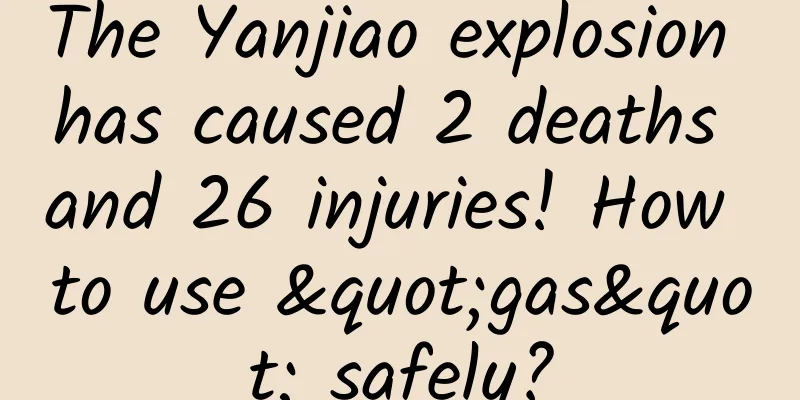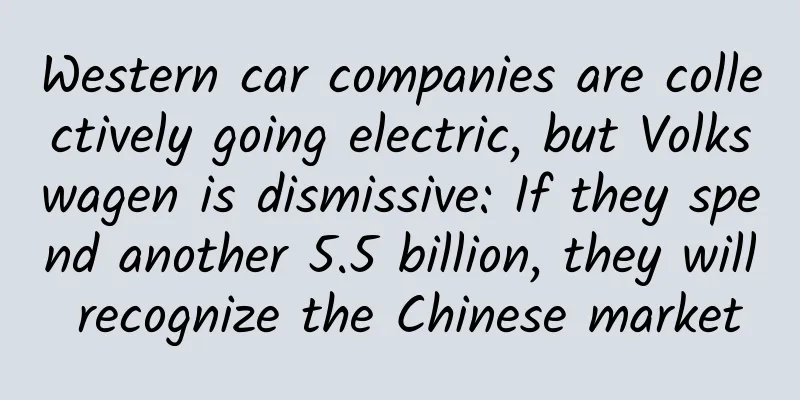The Yanjiao explosion has caused 2 deaths and 26 injuries! How to use "gas" safely?

|
According to CCTV News, on March 13, a shop in Yanjiao, Hebei Province, exploded due to suspected gas leakage. According to the director of the Sanhe City Emergency Management Bureau, 28 people have been rescued so far, and the accident caused 2 deaths and 26 injuries. The injured have been sent to the hospital, most of them with minor injuries. The open fire has been extinguished. Residents within a 500-meter radius have been relocated, onlookers have been evacuated, and a cordon has been set up at the scene. The specific cause of the explosion has not yet been determined. Gas has brought great convenience to our daily lives, but if used improperly or carelessly, it can easily cause gas safety accidents. Gas explosion accidents occur frequently, causing huge personal injuries and economic losses. While it is painful, it also serves as a wake-up call for us - gas safety issues cannot be taken lightly. To use gas safely, we first need to understand gas. Copyright images in the gallery. Reprinting and using them may lead to copyright disputes. Natural gas, artificial gas, liquefied petroleum gas What's the difference Gas is a general term for gaseous fuels, which can release heat through combustion and be used by residents in daily life and industrial enterprises. There are many types of gas, and the most common ones in our daily life are natural gas, artificial gas, and liquefied petroleum gas. So, what are the differences between them? 1 Different ingredients Natural gas is a combustible gas extracted from natural oil and gas fields, coalbed methane, and mud volcano gas. It is evolved from the remains of ancient organisms under high temperature and high pressure for hundreds of millions of years . Its main component is methane, accounting for more than 80%, and the rest are small amounts of ethane, propane, butane, nitrogen, hydrogen sulfide, water vapor and other gas components. Nowadays, most of the pipeline gas sources used in our homes are natural gas, which is transported to each household through preset pipelines. Natural gas is a clean, environmentally friendly, high-quality energy source that contains almost no sulfur, dust, or other harmful substances. When burned, it produces less carbon dioxide than other fossil fuels, thus causing a lower greenhouse effect. People give natural gas the title of "blue gold", which corresponds to the "black gold" of oil, and they are on par with each other, which is enough to show the importance of natural gas. Copyright images in the gallery. Reprinting and using them may lead to copyright disputes. Coal gas is not naturally formed. It is a combustible gas made from coal. According to the processing method, it can be divided into water gas, semi-water gas or generator gas. Its main component is carbon monoxide, and it also contains a small amount of methane and hydrogen. Coal gas is difficult to compress, so it is also transported to each household through fixed pipelines. The use of coal gas is earlier than that of natural gas and liquefied petroleum gas. As early as 1949, cities such as Harbin and Shenyang began to use coal gas. With the development of natural gas engineering, coal gas is gradually being replaced by natural gas. Liquefied petroleum gas is a mixture of alkanes and olefins with a relatively complex composition. The main components are propane and butane, and usually contain a small amount of propylene and butene. It is a colorless volatile liquid obtained by pressurizing and cooling natural gas or petroleum to liquefy it. In daily life, liquefied petroleum gas is stored in a tank container in a liquid state under appropriate pressure and is often used as a cooking fuel. For example, the bottled gas we use when eating hot pot is generally liquefied petroleum gas. Copyright images in the gallery. Reprinting and using them may lead to copyright disputes. 2 The calorific value is different The calorific value of gas is the amount of heat that a certain volume or mass of gas can release. Therefore, the higher the calorific value, the greater the amount of heat released by the same volume of gas. The calorific value of natural gas per cubic meter is about 8000 kcal to 8500 kcal; the calorific value of city gas per cubic meter is about 3500 kcal; the calorific value of liquefied gas per cubic meter is about 25200 kcal. The calorific value of liquefied petroleum gas is the highest among the three, which is one of the reasons why restaurant kitchens often choose liquefied gas tanks as heat sources for cooking. 3 Safety is different The main component of coal gas is carbon monoxide. Once a coal gas leak occurs, it can easily cause carbon monoxide poisoning. The main component of natural gas, methane, is colorless, odorless and non-toxic. In order to detect leaks as early as possible, odorants are often added to pipeline natural gas. The main components of liquefied petroleum gas , alkanes and olefins, are colorless, odorless and non-toxic, but the mixed gas composed of a small amount of hydrogen sulfide contained in it can irritate the respiratory tract, and when the concentration is too high, it can even cause suffocation and nerve paralysis. Gas is a flammable substance. When gas is mixed with air within a certain concentration range, it will explode when encountering a fire source. This concentration range is called the explosion limit. The explosion limit of natural gas is between 5% and 15%; the explosion limit of coal gas varies with the content of the components of the mixed gas, generally between 4.5% and 35.8%; the explosion limit of liquefied petroleum gas is between 1.5% and 9.5%, and the explosion power of 1 kg of liquefied petroleum gas after it is completely vaporized is equivalent to the equivalent of 4 to 10 kg of TNT explosives. It should be noted that carbon oxides produced when gas is not completely burned can also cause poisoning, so you must pay attention to safety when using gas. Copyright images in the gallery. Reprinting and using them may lead to copyright disputes. How to use gas safely? Please keep in mind the following When using gas equipment, it is necessary to "replace on time and check frequently": frequently check whether there are leaks at each connection point on the gas pipeline; replace the hose every 18 months, and observe it during this period to see if it is aging or cracking; in addition, the hose should be kept away from heat sources and both ends should be clamped with pipe clamps. When using a gas stove, be careful not to leave it far away; if you cannot light the stove, pause for a while and make sure the gas has dissipated before trying to light it again; develop the habit of closing the gas valve in time after using the gas; select and correctly install the gas alarm according to the type of gas source; the alarm should be placed near the gas meter or gas pipeline connection. When using gas for a long time, be sure to ventilate the kitchen. If the kitchen is not well ventilated, the use of the gas stove may cause insufficient oxygen in the kitchen, resulting in carbon monoxide poisoning. In addition, stoves with different gas sources must not be used together . If you change the gas source type, you must replace the corresponding stove to match it. This is because different gas-air mixing ratios are different, and the amount of air required for complete combustion of the same volume of gas is different, and the intake pressure is also different: the pressure of liquefied petroleum gas is high, and the nozzle aperture is small; the pressure of natural gas is low, and the nozzle aperture is large. If the mixing ratio is not suitable, abnormal combustion will occur, posing a safety hazard. Natural gas stoves produced by regular manufacturers will be marked with "T" on the label, liquefied gas stoves will be marked with "Y", and artificial gas stoves will be marked with "R". Copyright images in the gallery. Reprinting and using them may lead to copyright disputes. Once a gas leak is discovered, the pipeline gas valve should be closed immediately. Open the doors and windows at home for ventilation to dilute the gas in the air so that it does not reach the explosion limit. Remember not to turn on any electrical equipment indoors at this time, including lights, exhaust fans, etc., to avoid metal friction to prevent electric sparks from causing explosions. If you find a gas leak or a serious fire, you should leave the scene immediately, notify your neighbors to evacuate, and call 119 for help outside. Gas safety is no small matter. To prevent accidents from happening, we must raise awareness of prevention, take precautions before they happen, and be more careful to increase safety. References [1] Enav P. China's oil and gas import strategy to 2020. London: SMi Publishing Ltd., 2001. [2] Lei Zhao. The Adaptability of Gas Range in Natural Gas Conversion. Journal of Jilin Institute of Architecture and Civil Engineering.2019. [3] Tongji University, Chongqing University, Harbin Institute of Technology, Beijing Institute of Civil Engineering. Gas Combustion and Application (4th Edition). Beijing: China Architecture & Building Press. 2011. [4] China Fire Protection. To prevent gas explosions, keep these in mind. 2021. Planning and production Produced by Science Popularization China Production丨Xuelici Author's unit: Dalian Institute of Chemical Physics, Chinese Academy of Sciences Producer: Computer Network Information Center, Chinese Academy of Sciences Editor: Zhong Yanping |
<<: This gene allows cells to “reborn with memories”!
>>: Is it an unnecessary "duplicate examination" to have an electrocardiogram and an echocardiogram?
Recommend
10 Top CSS3 Code Generators
New online tools and web applications allow devel...
Can sighing often lead to "poisoning"?
Source: Youlai Healthy Life...
The loud noise 59 years ago was his most unforgettable birthday gift!
October 16, 1964 China's first atomic bomb ex...
SUV sales hit a 7-year low, electric SUV may be the best tool to break the deadlock
In the past few years, the SUV market has grown r...
A new way for family interaction: "Sports Plus OL" Bodhi tennis match "smash" experience
Screen: operate: Sound Effects: Plot: Experience:...
There are 7 ways to promote on Xiaohongshu. Have you ever made a mistake?
"Little Red Book" is an emerging cross-...
I recommend several H5 page creation tools, choose one for yourself!
Ever since micro scenes made with H5 became popul...
Lechang SEO Training: What experiences do you have in SEO optimization? What solutions can you use to build a website?
SEO is a highly technical industry, and many of i...
Nobel Prize winner got this counterintuitive phenomenon wrong, but NBA star got it right
Almost every basketball player, coach or fan beli...
Case analysis: How to acquire 20,000+ core community users in 3 months?
As more and more growth strategies emerge in the ...
NIO’s “bad reviews” trend
When the spotlight of the stage finally fell on L...
ALS patient tweets: Hello, world!
Recently, domestic and foreign media suddenly bro...
The most comprehensive summary of Apple bidding ads ASM terms in history
Since I started working on Apple's ASM biddin...
When geometry meets physics: Is the Earth a topological insulator?
As physics developed into the 20th century, geome...
Toutiao Advertising Manual, let your information flow ads be on the "headlines"!
Recently, CB Insights, a well-known American vent...









